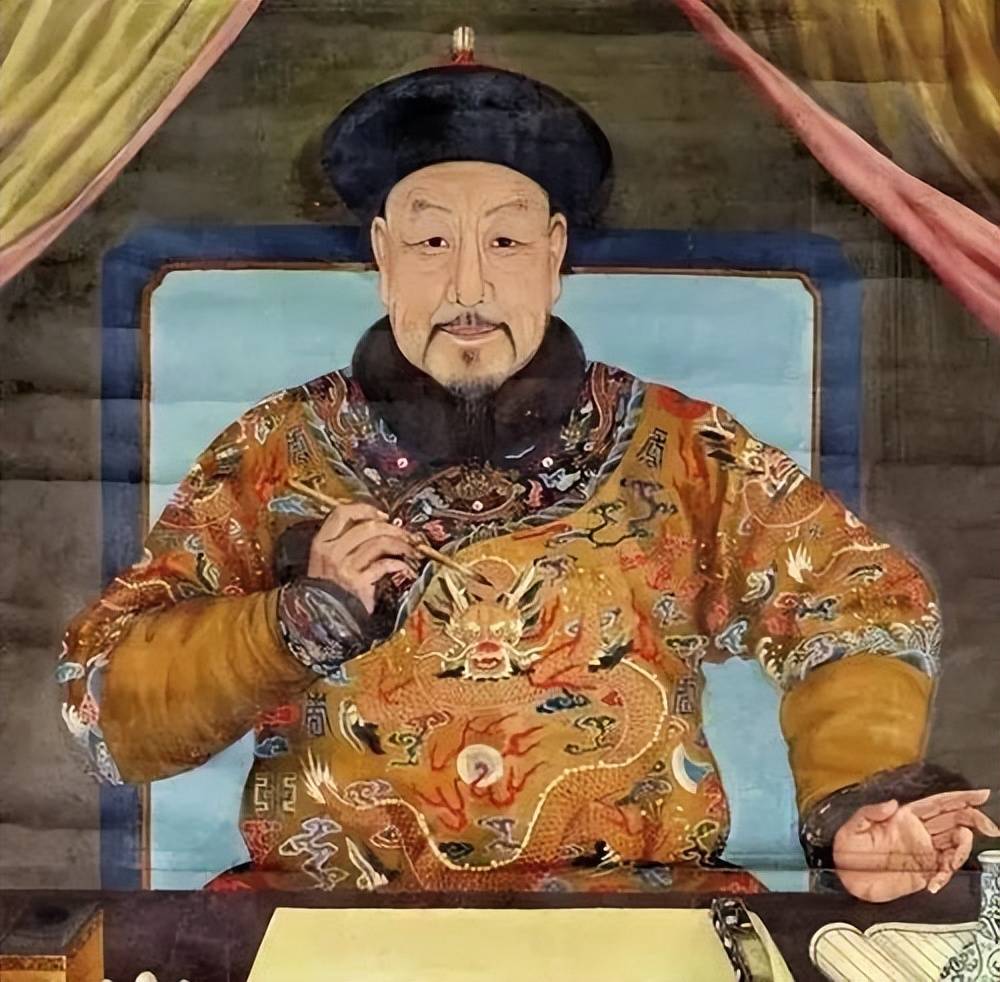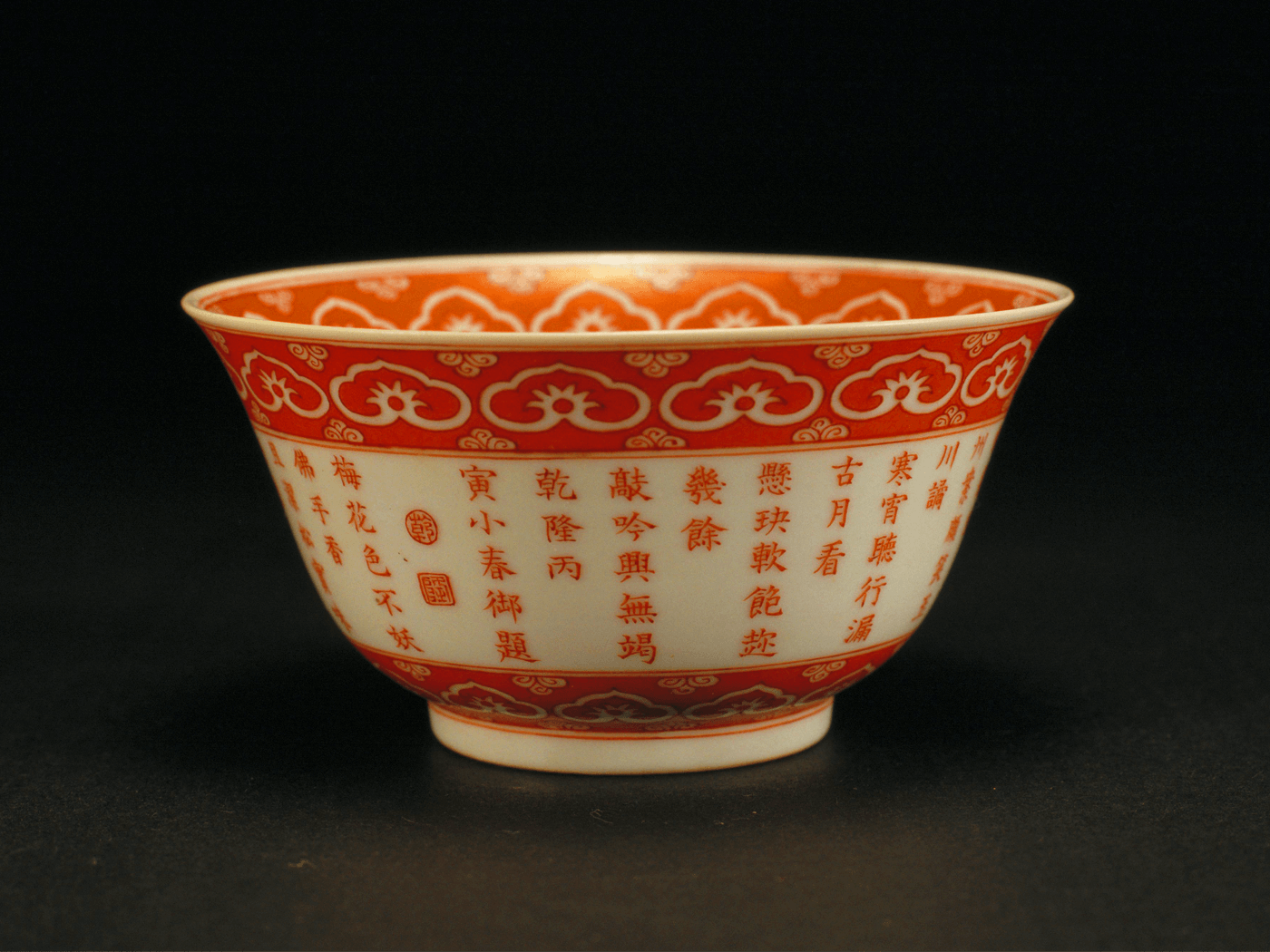ONE OF THE MOST charming things about historical Chinese officials is their reverence for poetry, and the incorporation of that fact into hiring practices. A love of literature was not seen as a dilletante interest, but a necessary qualification for high rank in the Chinese government.
And perhaps the most extreme example is the famous poet-ruler Emperor Qianlong (乾隆帝) said to have written 43,000 poems during his reign in the Qing Dynasty (1616-1911).

But that doesn’t mean he spent all his time chewing his quill, looking at nature, and penning bon mots. In truth, many of “his” poems were written for him by officials, as he admitted himself—so he saw himself more as a curator of work during his reign.
And literary critics say the ruler was clearly more interested in quantity than quality (to put it kindly).
POET-RULER’S CUP
Sometimes his poems were carved or painted onto items of imperial porcelain or other works of art.
The priceless Three Purities Tea Cup, produced in Qianlong’s era, is on display at the Hong Kong Palace Museum.
Three purities tea (三清茶) is made with three refreshing ingredients: plum blossoms (梅花), Buddha’s hand citrons (佛手) and pine nuts (松實), and is brewed with hot water from the Jade Spring (玉泉) in the west of Beijing. The water from the Jade Spring is a historical drinking water source for imperial families in the Qing state.

The white-and-red porcelain teacup is inscribed with a poem from Qianlong which says that the plum blossoms are superbly appealing, while Buddha’s hand citrons are fragrant, and the pine nuts are scrumptious.
The tea was supposedly served when Qianlong was engaged in composing poetry with his officials.
FLOWER CUPS FOR A GOOD HARVEST
Other priceless exhibits in Qing dynasty in the museum include a set of blue-and-white twelve monthly flower cups (青花十二月花卉圖題詩句杯) – which were produced by craftsmen in imperial kilns in Jiangxi’s Jingdezhen (景德鎮) in Emperor Kangxi (康熙帝)’s reign.

Characterized by thin body and glaze, each cup represents a month in a year and is decorated with flowers – such as narcissus, peach blossoms and peonies.

The cups were used to serve wine at rituals in the flower festival held at the Chengde Mountain Resort (承德避暑山莊) – a majestic summer retreat for Qing emperors – or in other imperial gardens in spring time each year. Imperial families wished for a good harvest in the country.
SPIRITUAL FAITH
This period also saw the creation of various items of art focused on the spiritual faith which had spread through China from India. The creation of magnificent artworks, paintings, porcelain and even models of Buddhist stupas (寶塔) greatly flourished in imperial court in the early Qing Dynasty.

Qing rulers generally had strong affinity with Buddhism, and Emperor Qianlong ordered his artisans in the Imperial Workshops (內務府造辦處) to create a variety of magnificent Buddhist stupas to attest to his devout faith.
One of the priceless exhibits at the Hong Kong Palace Museum is a scaled-down golden stupa inlaid with jewel and pearl ornaments, created under the imperial order of Emperor Qianlong in 1740s.
The stupa is now one of the country’s top-graded relics, sent to Hong Kong from the Palace Museum in Beijing.
Qianlong loved the golden stupa very much and placed it in the Palace of Double Brilliance (重華宮) for worship and mediation.
The multi-faceted Buddhist reliquary (a container for holy objects) was finely cast with carvings of flowers and words in Sanskrit – the sacred language of Hinduism in India.

Emperor Qianlong was a devoted practitioner of his faith, and studied Tibetan Buddhism with monks from monasteries. He was even regarded as a deity in Buddhism as he had been depicted as Manjusri (文殊) – the Bodhisattva of Wisdom (智慧菩薩) – in an ancient painting in Qing court.
In the painting, Qianlong wears a red cassock and Buddhist hat, while his left hand holds a Dharma wheel (法輪) and his right hand forms a preaching sign.
ARTIFACTS WITH CLOISONNE AND ENAMEL
There are many other items worth seeing too. A historic ewer, or jug, with woman and baby figures and flowers in a cartouche – an ornate frame – is an excellent example.

The ewer uses a design technique known as cloisonne – which involves laying out designs in glass or gems or other materials, edging them with golden wire, and then soldering them onto artifacts.
Emperor Kangxi was engrossed with European painted enamelware, which featured designs painted directly onto artworks with enamel.

Enamel was made of materials such as quartz (石英) and feldspar (長石) to produce different colours. In powder form, it can be inlaid or painted on metal cores, thereby serving decoration and preventing rusting.
During the early Qing dynasty, emperors loved a wide array of superb porcelain, teacups and containers designed as Buddhist stupas. They were renowned for their wide knowledge and insightful appreciation of these fine works of art.
Image at the top from Macro Zuppone on Unsplash.
